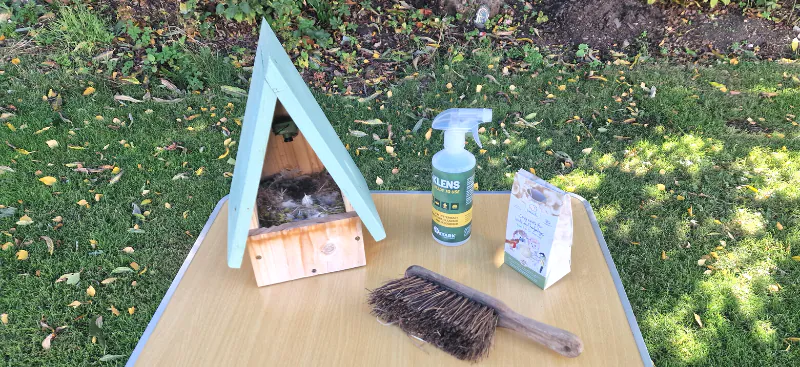How to Transform a Bird Box Into a Winter Roost
During the colder seasons, wild birds utilize nest boxes as roosting spots to seek shelter from rain, snow, and wind. With autumn in full swing, it's an opportune moment to take down your bird box and transform it into a winter roost box! Old, used bird boxes from the nesting season may contain parasites and harmful bacteria that could pose a threat to future inhabitants. Hence, cleaning out bird boxes before the roosting season begins is vital. We're here to guide you through the process with a simple step-by-step guide on transforming your nest boxes into winter roosts!
Should you clean out bird boxes?
Thoroughly cleaning a previously used bird box is essential for both enticing future occupants and ensuring their safety. This process eliminates accumulated parasites like ticks and fleas, along with their eggs, thereby reducing the likelihood of birds contracting diseases. It's important to consider that birds may have left their droppings in the box, potentially harbouring bacteria and other pathogens. Furthermore, small mammals might have sought refuge in these boxes, heightening the risk of cross-contamination, which could harm certain bird species.
When to clean out bird nest boxes?
The best time to clean a bird box is well after the nesting season has finished. The beginning of October to the end of November is your safe bet for taking down boxes and giving them a good clean. This is to completely avoid the chance of disturbing the previous occupants. Under the Wildlife & Countryside Act 1981, it is illegal to take, damage or destroy a wild bird's nest while it's being used or built. This is why we insist that nest boxes be cleaned only during autumn, well after the nesting season, and before birds begin roosting for winter.
How do you clean a bird box: step by step guide
Note
- Cleaning nest boxes should be performed by an adult only.
- We recommend doing this on a sunny day to allow the nest box to dry more quickly.
What you will need:
- rubber gloves
- a cleaning brush
- boiling water
- veterinary disinfectant (optional)
- nesting wool (optional)
Step one
Wearing rubber gloves, take down the nest box for inspection (a good quality nest box should give you easy access through an opening). If you see any unhatched eggs or dead birds, you must dispose of them.
Under the terms of the Wildlife and Countryside Act 1981, if unhatched eggs are found in the box, they can only legally be removed from October to January, and they must be destroyed – it is illegal to keep them.
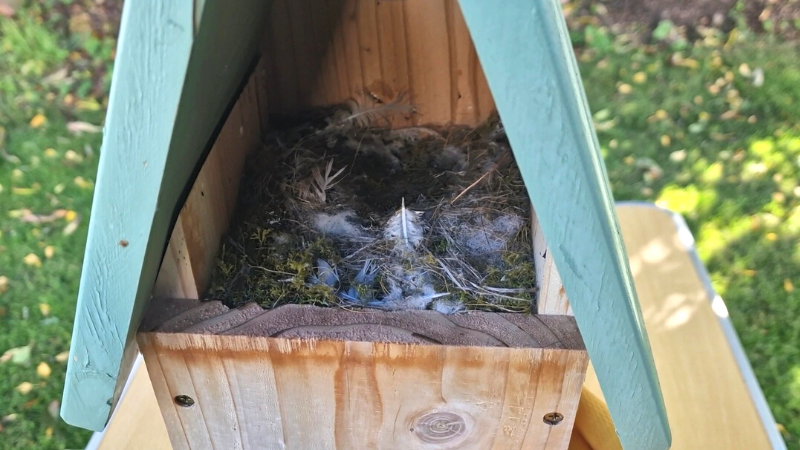
Step two
Using a brush, remove any nesting material in the bird box until it is completely cleared.
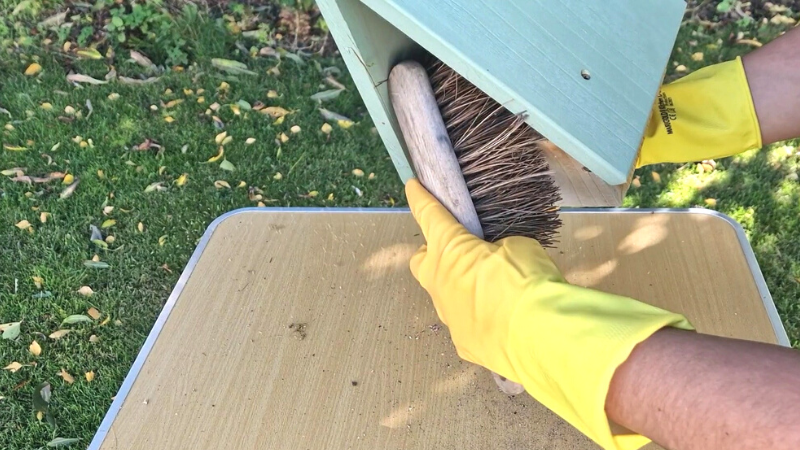
Step three
With great care, pour boiling water all over the nest box inside and out until completely drenched. This is to kill any pesticides that could still be lingering inside.
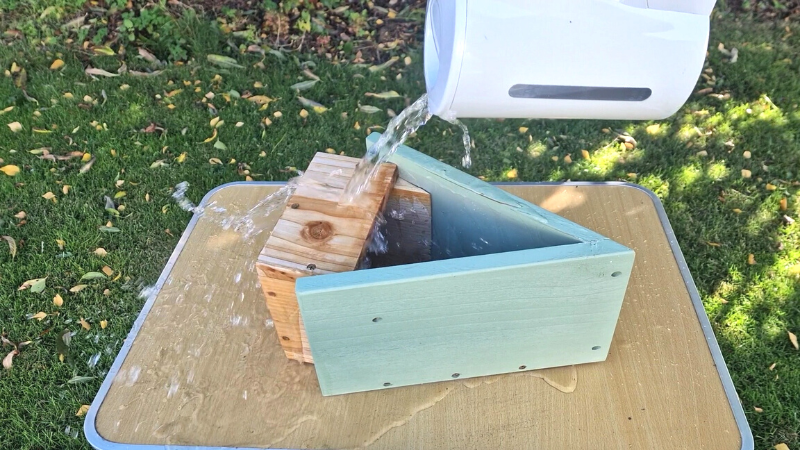
Step four
For a deeper clean of, you can use a veterinary disinfectant such as Ark-Klens to clean a bird box roost. This is great for cleaning off any deadly bacteria that may harm your birds. Allow the disinfectant to sit on the nest box for 10 minutes, and then pour more boiling water on it. This specialist solution is safe to use on animal accessories and will not harm the birds. Insecticides and flea powders must not be used as these can be harmful to wildlife.
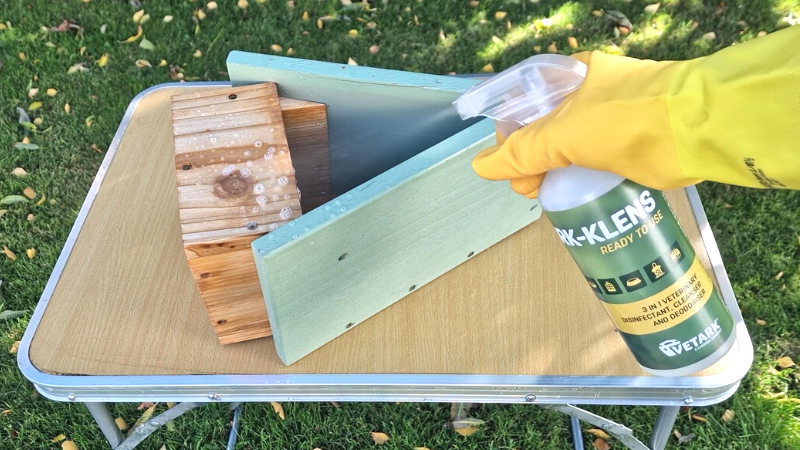
Step five
Leave the bird box to dry completely before placing it back up to its nesting spot.
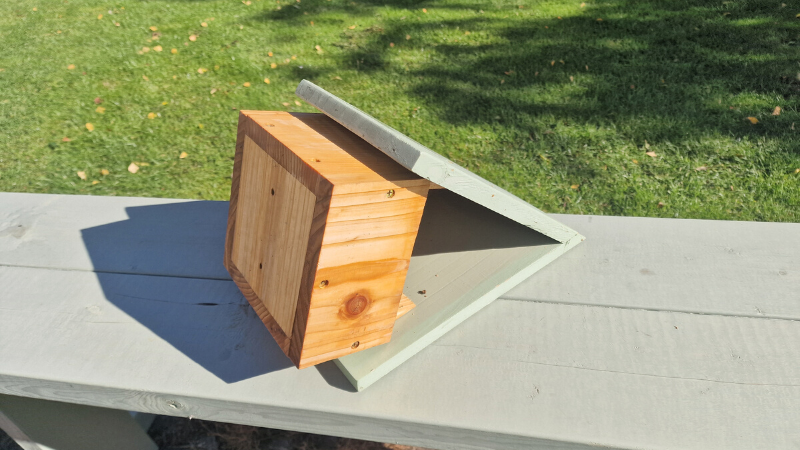
Step six
If you want to give your birds an extra helping hand for roosting season, place nesting wool a few meters away from the box, so birds can quickly locate nesting material.
Should you put anything in a nesting box?
There's no need to put nesting material directly into a bird box, as birds are very resourceful when it comes to making a home comfortable. Garden birds may even remove any materials they didn't put there themselves, as they may think it's a previous owner's nest. If you wish to help birds build a nest in your garden, you can place nesting wool near the nest box. This will allow birds to locate material much more quickly and prevent them from wasting precious energy searching for other materials.
How to attract birds to a roost box
Setting up bird feeders and water around your nesting box is a great way to entice birds to it. If you see the same bird flying back and forth through the box's entrance, it quite possibly means it's taking up residency and has started to build its nest.
When this happens, you should move the feeders away from the box as activity at the feeder could disturb roosting birds.
For more information on nest boxes, check out our Beginner's Guide to Putting up a Nest Box, where you can learn all about the best places to site a nest box and how to attract certain species of birds.

